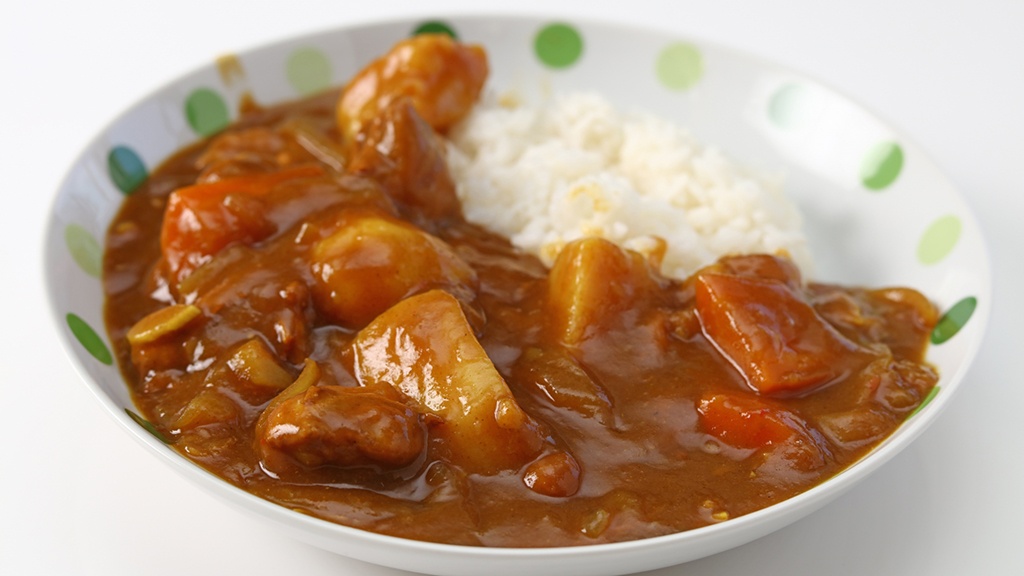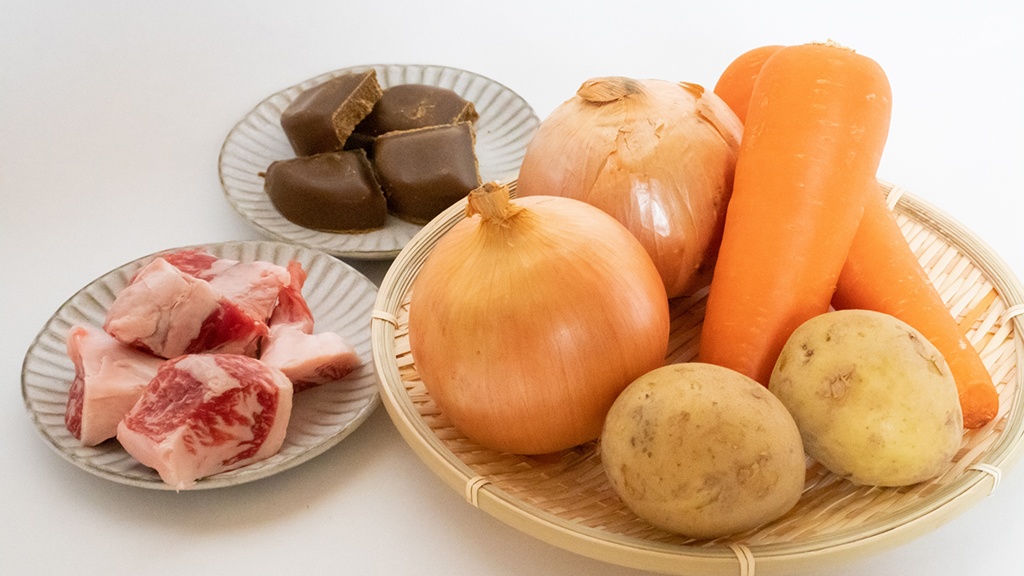Characteristics of Japanese Curry – How does it differ from Indian Curry?

This post is also available in 日本語
Curry is one of Japan’s favorite foods, to the extent that people say, “no Japanese person dislikes curry”. Even in animation and manga, we see scenes of people eating curry when camping. On this occasion, I would like to introduce you to Japanese curry culture.
Contents
Curry is a popular food in Japan
There are records to show that Japanese people first encountered curry at the close of the Edo period. As it was brought by English trading ships, curry was thought to be a western dish. As the number of restaurants that served curry increased, it became popular as “stylish Western food”. Following that, domestic curry powder and Curry Roux (Curry sauce mix: hardened curry powder that combines various spices and fried flour)” appeared and curry became a classic family dish in Japan. According to one theory, Japanese people are said to eat curry at least once a week on average*1. It can truly be said to be food that is loved by the Japanese people.
*1 S&B curry.com “About how often do Japanese people eat curry every year?”
https://www.sbcurry.com/faq/faq-463/
Characteristics of Japanese curry – how does it differ from Indian curry?

According to Indians, the home of authentic curry, Japanese curry is not ”curry”. Japanese curry differs from Indian curry on two main points.
- Japanese curry uses flour, so it is thick. Unlike smooth Indian curry, it has texture like stew.
- In Japan, many people use curry roux and curry powder, and people do not often blend spices at home. To create individuality in each home, they may use condiments such as source, soy sauce, or ketchup.
Japanese curry is a food where you stew meat and vegetables using a commercially available curry roux. On the other hand, in the case of Indian curry, it is made by blending a variety of spices in the home. Indian curry, which uses a wide array of spices, is also popular among Japanese people.
Japan is a curry kingdom
For Japanese people, curry is a taste they have been used to eating from a young age. As it is popular with all age groups, there are many different types of curry in Japan
Specialist curry shops
CURRY HOUSE CoCo ICHIBANYA

This is a specialist curry shop known by its nickname, “CoCoICHI”. There are more than 40 types of topping, including sausage, cheese, and natto. You can also choose from 12 levels of spiciness. An attraction of this store is that you can order your favorite type of curry.
https://www.ichibanya.co.jp/menu/order.html
Go!Go! CERRY!

This is a specialist curry shop hailing from Kanazawa City, Ishikawa. It is characterized by chopped cabbage and pork cutlets being laid on top of blackish curry. The curry has a distinctive taste and has attracted many fans.
http://gogocurry.com/menu/001.html
Curry roux

Curry roux was developed to allow people to make curry simply in their homes. You can always find a wide variety of these products on supermarket shelves. As the taste differs for each brand, so each family has their own favorite roux.
Instant curry in a sealed pouch

Curry is the most sold boil-in-the-bag product. There are as many different brands as there are for curry roux. Japanese curry is a standard, but many international curries, such as Indian curry and Thai curry are also sold as instant curry in a sealed pouch.
Curry bun

This is popular filled and stuffed bread in which curry is baked inside. This can be said to be a classic product sold at any bakery you go to. Even at convenience stores, such as Lawson and 7-Eleven, they sell curry bun in the distinctive way each company likes it.
Curry udon

Curry udon is when the flavor of curry is added to the soup of udon noodles, and this is a popular menu item at Udon shops. There are also many menu items in which curry is mixed with noodles other than udon, such as curry soba and curry ramen.
Japanese curry is the best
Japan has evolved Indian curry that came via England for over 150 years. In particular, curry roux is a distinctive ingredient in Japan, and as it transcends individual ingredients, it has a place similar to condiments such as soy sauce and miso. It can be said that Japanese Curry culture, in which the curry taste is deliciously applied to everything, such as bread and noodles, is truly the greatest in the world.
- What are “Wagara (traditional Japanese patterns)”? Meaning and Prayers Accompanying the Main Japanese Patterns
- Types of Sushi and Its History
- Easily Explained. What is “Furusato Nozei”?
- Katakana words, what do they mean? “Icons, remote controls, computers…”
- [2021 | Tokyo] Four Japanese language schools recommended









